Coronavirus Today: Who’s next in the vaccine line?
- Share via
Good evening. I’m Thuc Nhi Nguyen, and it’s Friday, Feb. 26. Here’s the latest on what’s happening with the coronavirus, plus ways to spend your weekend and a look at some of the week’s best stories.
Of the dozens of emails we receive every day about the newsletter (thank you for writing, everyone!), many are about vaccine eligibility. When will a specific group become eligible? How did one group get to go before another? How do I know when it’ll be my turn?
You’re right to have so many questions, but as my colleagues Soumya Karlamangla and Colleen Shalby report, the answers aren’t easy to find. You see, eligibility is based largely on where you live. There are 48 vaccine eligibility lists across 50 states, and in some places there are sub-lists as well. California, for instance, has as many as 61 additional lists, because local health departments can deviate from state rules.
Each priority list represents an attempt to solve a difficult problem: How can a limited supply of vaccines be allocated in a way that balances science and politics while also being equitable and practical?
The Centers for Disease Control and Prevention released guidelines for the vaccination effort in December. The recommendations were to start with healthcare workers and residents of nursing homes. The next group was supposed to include people ages 75 and over and front-line essential workers. But on Jan. 12, before there was enough vaccine available to proceed down the priority list, officials in Washington, D.C., urged states to speed things up by offering shots to everyone 65 and above. That’s how we got to where we are in California.
Death tolls were skyrocketing at the time. It felt urgent to protect those who were more likely to die, and it was simpler to verify age over occupation, said Jennifer Tolbert, an author of a Kaiser Family Foundation report that collected data about varying vaccination eligibility lists. But other experts suggested that immunizing essential workers who could more easily contract and spread the virus while on the job would be a more effective way to curb the pandemic.
So how do you decide what would save the most lives?
In an analysis released this month, Rand Corp. researchers found that vaccinating the 15% of the population that has the fewest contacts, such as the elderly who mostly stay home, would reduce new infections in a society by 1%. On the other hand, a vaccination plan that targeted the 15% of the population with the most contacts, such as essential workers, could reduce infections by 96%.
Other experts have concluded that vaccinating the elderly first would save more lives, since age is the biggest risk factor for a severe case of COVID-19.
Sorting out the pecking order is just the first step. It doesn’t address the actual process of getting shots into arms, which has caused additional nightmares. Shalby reports on how eligibility wasn’t enough to secure a dose for Christine Yano, mother to 15-month-old triplets who have chronic lung disease.
As a caretaker for her children who are at increased risk, Yano, 33, was allowed to be vaccinated. She showed documentation of her eligibility but was turned away three times at two vaccination sites when workers thought her certification was fake. Apparently, they’d seen people make similar claims as they tried to cheat an already fragile system.
“Hundreds” of folks try to sneak their way into the inoculation line every day, said L.A. County Public Health Director Barbara Ferrer. “Some of those folks have gone to great lengths to, in fact, establish eligibility when they’re taking appointments from people,” she said.
Yano was finally able to get a shot after appealing to a manager at the Dodger Stadium vaccination site.
Questions about how to verify eligibility — especially as more categories of essential workers and people with disabilities gain access to the vaccine next month — will make the vaccination process even more difficult until there is increased supply.
There was a step forward on that front Friday, as the COVID-19 vaccine from Johnson & Johnson cleared a crucial hurdle by winning an endorsement from a Food and Drug Administration scientific advisory panel. The FDA may authorize the one-dose vaccine for emergency use as soon as Saturday. That would add an easier-to-use option to the nation’s vaccination effort. If authorized, J&J said it could deliver 20 million doses by the end of March and 100 million by the end of June.
Ramping up vaccinations is especially important now in order to stay ahead of threats from emerging coronavirus variants, my colleagues Rong-Gong Lin II and Melissa Healy report.
A strain first identified in South Africa is less susceptible to COVID-19 vaccines, and others — including one from California — have also shown signs of vaccine resistance. Even so, researchers say the vaccines are quite good and remain our best bet for being protected against the virus.
“This is a race … between the virus and getting vaccines into people,” Dr. Anthony Fauci said Thursday on NBC’s “Today” show. “The longer one waits on getting vaccinated, the better chance the virus has to get a variant or a mutation.”
Tell us: What are you most looking forward to doing after you and your loved ones are vaccinated? Email us, and we may feature your reply in a future edition of the newsletter.
By the numbers
California cases and deaths as of 5:57 p.m. on Friday:

Track California’s coronavirus spread and vaccination efforts — including the latest numbers and how they break down — with our graphics.
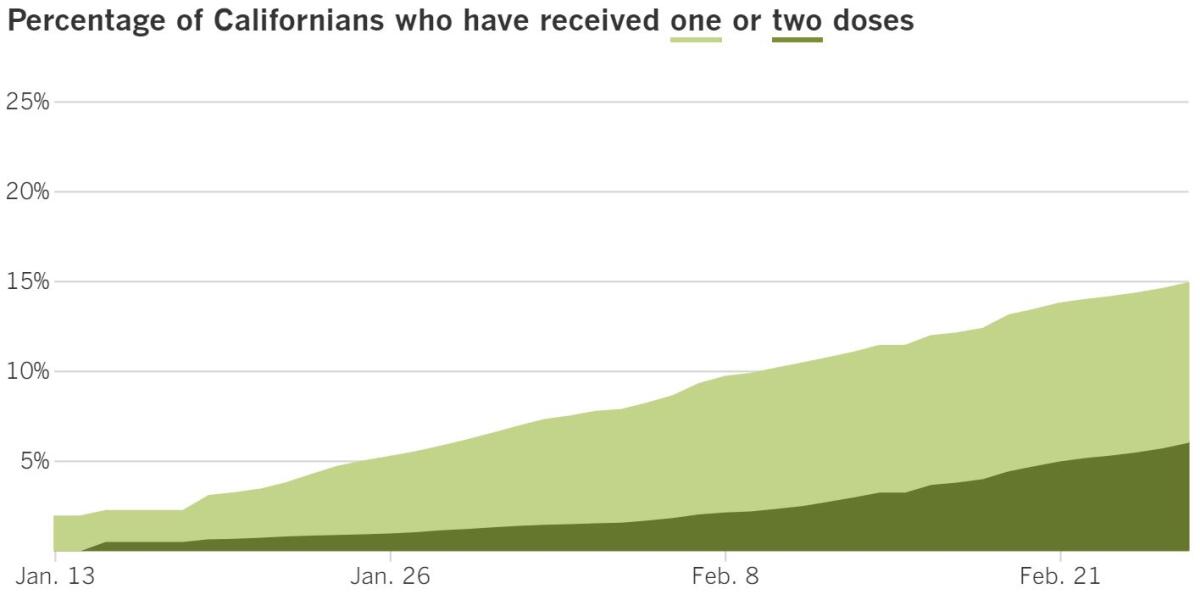
See the current status of California’s reopening, county by county, with our tracker.
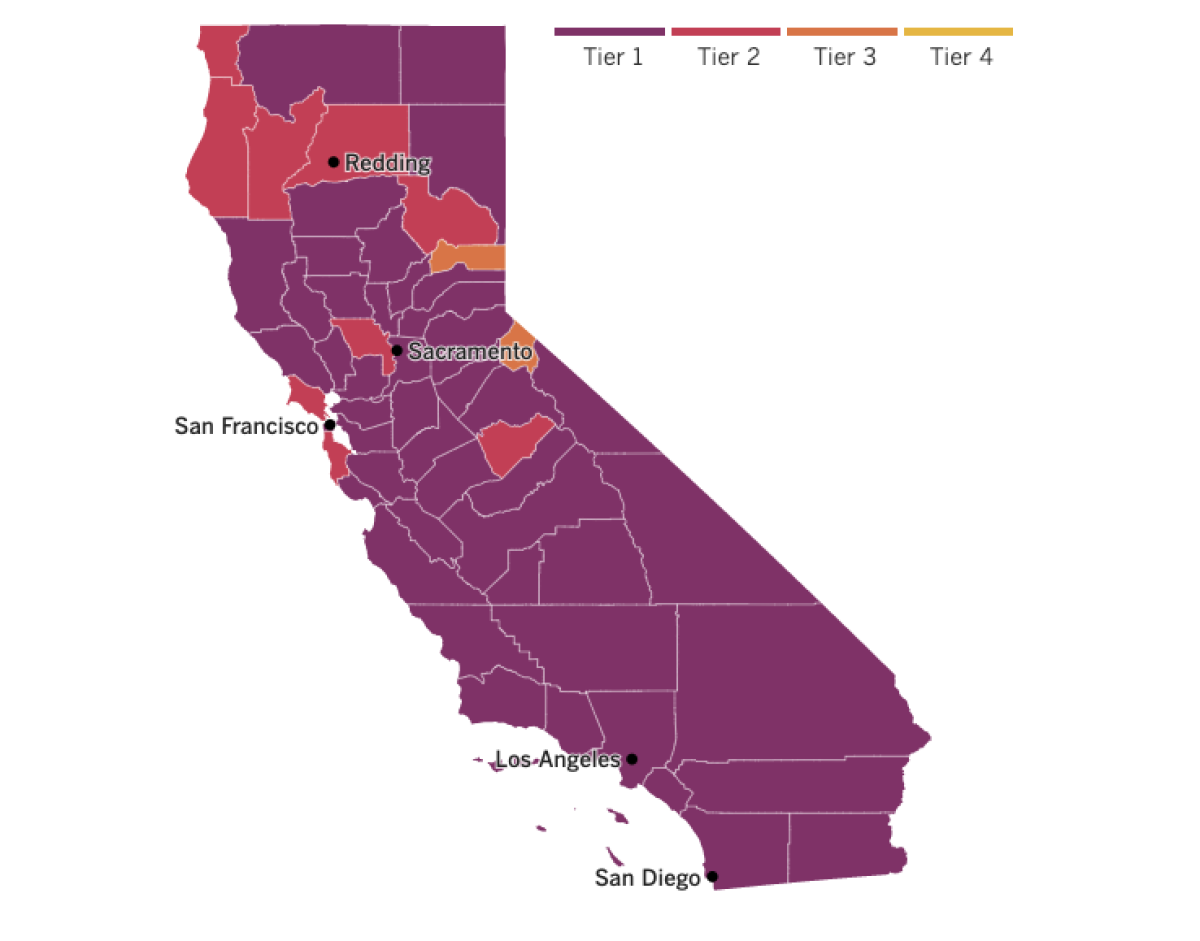

What to read this weekend
LGBTQ Latinos looking for a lifeline
It seems that every day brings new reports of a different marginalized community suffering disproportionately from the pandemic. Women have lost their jobs at much higher rates than men. People of color die at higher rates than white people — especially Latinos in L.A. County, who are dying at three times the rate of white people, despite recent reductions in COVID-19 deaths overall. People with disabilities can’t properly access vaccination services.
Being at the intersection of several such groups only magnifies the struggle, my colleague Selene Rivera reports, as she introduces readers to Marimar, a transgender woman who came to the United States from Mexico in 1993 in search of work.
Marimar is five months behind on her rent after the pandemic stalled her home-based food delivery business. She contracted the coronavirus in July and is still feeling the effects. She doesn’t know where to turn when there is little help for LGBTQ Latinos.
“I feel abandoned,” she said, “but my instinct tells me that I am not the only one who feels that way. The LGBTQ community, especially Latinos and immigrants, is suffering even more with this pandemic economically, but many do not say it out of shame.”
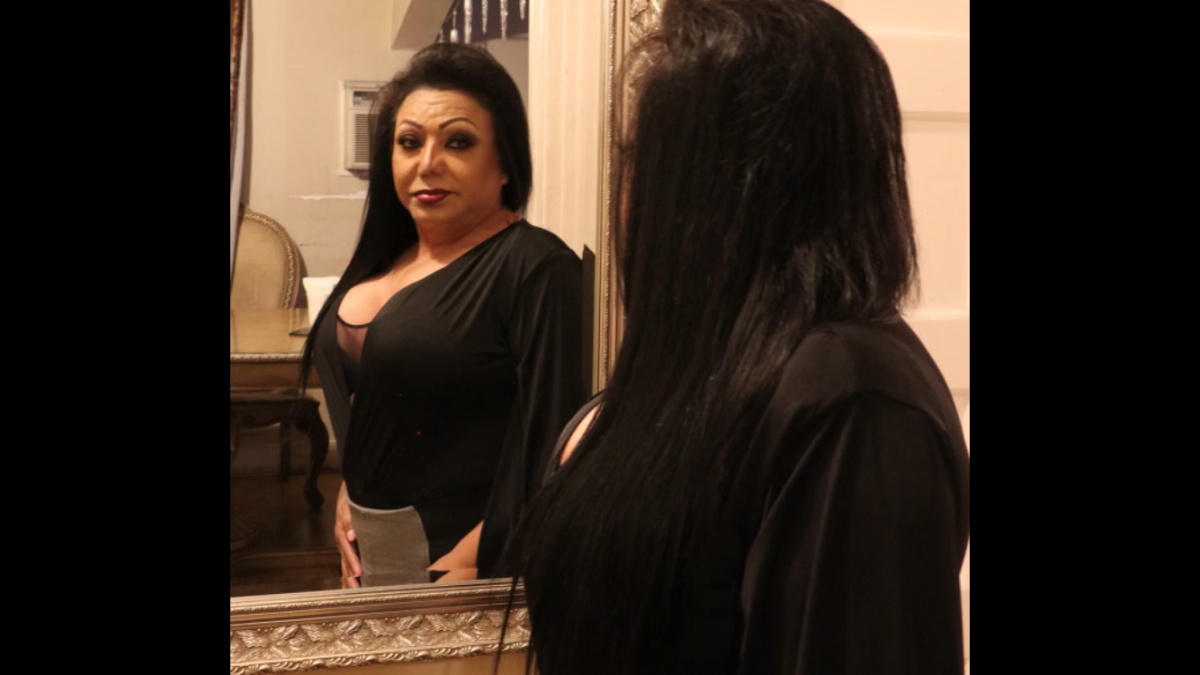
Indeed, places that used to be safe havens for LGBTQ Latino people are disappearing — places like downtown’s New Jalisco Bar, which has halted business for almost a year and is struggling to ensure that the closure doesn’t become permanent.
“Jalisco to me feels like going to, like, a family quinceañera,” Gabriela Ruiz, 29, a queer performance artist, tells my colleague Andrea Castillo. “Everyone there is like your gay uncle.”
Gay bars in general have been in decline for years, and the pandemic has hastened the closure of more LGBTQ spaces. And although in recent years bars that cater to the broader LGBTQ community have begun dedicating certain nights to Latinos and other ethnic groups, there’s no substitute for those that cater specifically to Latinos, said Eddy Francisco Alvarez Jr., an assistant professor of Chicana and Chicano studies at Cal State Fullerton.
They’re places where queer Latinos “don’t have to compartmentalize different parts of who we are,” he said. “We can show up and be Latino, Chicano, immigrant, Afro-Latino, femme and trans — all of those intersecting identities — and just be who we want to be. And be messy.”
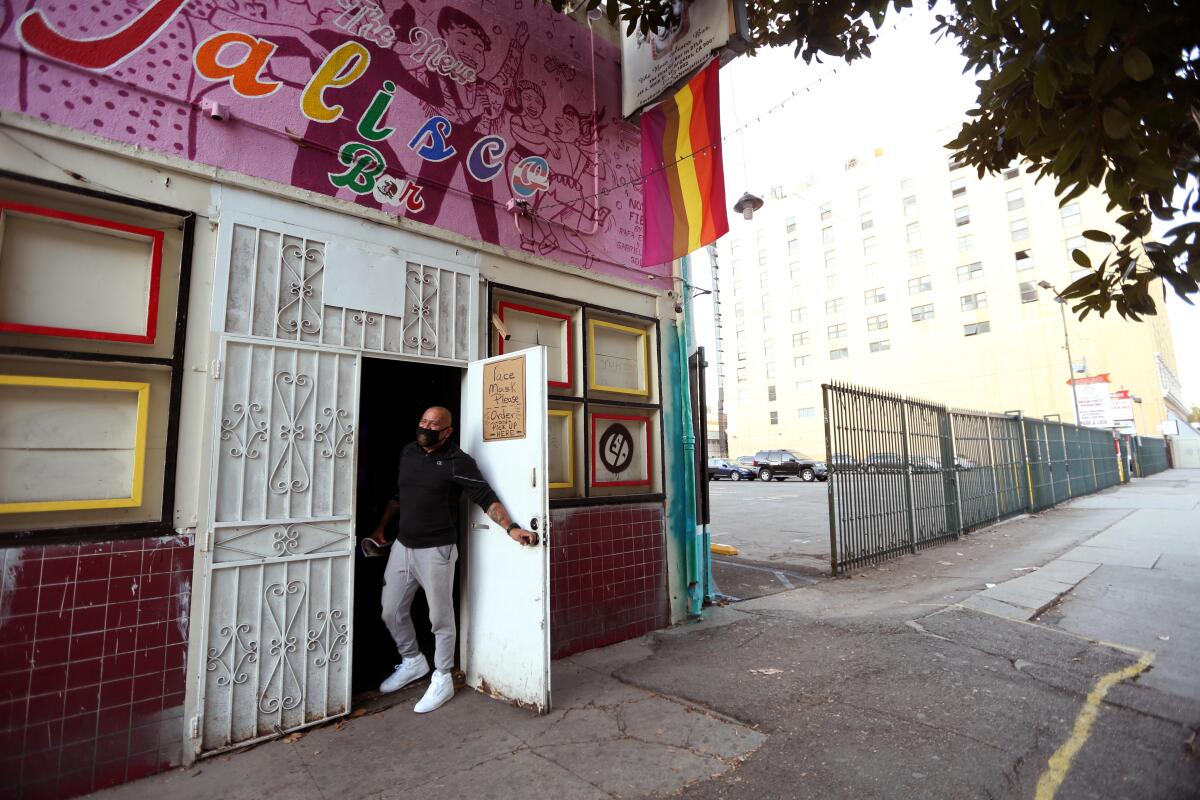
OB-GYN care on the back burner
Monica Gaya was “definitely concerned” about an abnormal mammogram she received last fall. But even with her family history of cancer, the test results didn’t outweigh the 44-year-old’s concerns about catching the coronavirus.
Many women across Southern California are delaying medical appointments, canceling exams and postponing screenings because of the pandemic, my colleague Hayley Smith reports, possibly putting their health in danger. Some women are voluntarily opting out for fear of exposing themselves to the virus at a doctor’s office. Others have had appointments canceled by doctors who need to redirect their services to address the pandemic.
“Women’s care is not a priority in society even when there is no pandemic going on,” said Gaya, who postponed a follow-up appointment. “The pandemic just pushes it further onto a back burner.”
In April, the CDC and Centers for Medicare and Medicaid Services both published guidelines recommending the postponement of elective and non-urgent procedures. OB-GYN wellness is “neither urgent nor emergent,” said Dr. Ritu Salani, a gynecologic oncology specialist at Ronald Reagan UCLA Medical Center, “but it truly isn’t something that’s optional.”
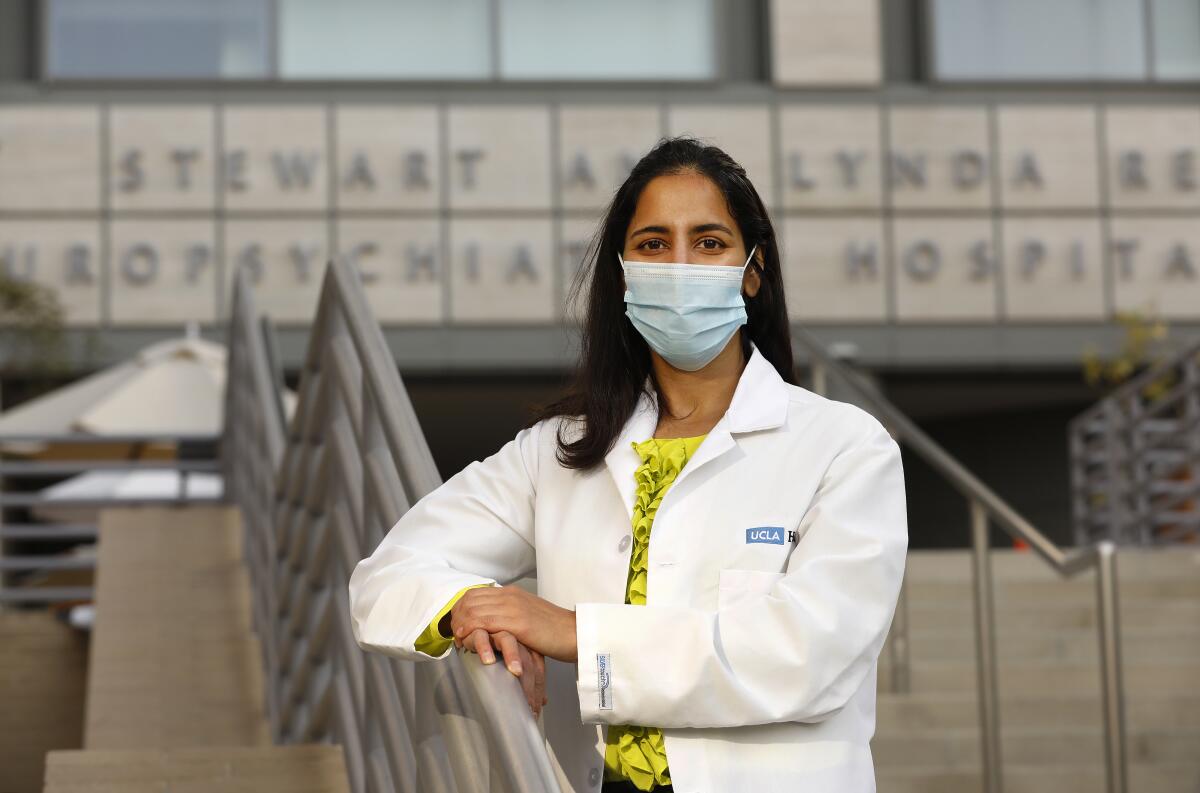
A global journey during a global pandemic
The pandemic made 2020 the deadliest year in U.S. history, bringing unprecedented demand for items most people never want to see at their homes: caskets, toe tags and body bags.
My colleague Emily Baumgaertner traces the path of a body bag that ended up holding the remains of a COVID-19 victim. Along the way, she exploring how the bags, made of high-density, leak-proof fabric, unite people in cities that are oceans and continents apart.
The product made in Siriphon Chakpangchaluem’s Thai factory traveled through the Port of Long Beach to Laguna Hills, where Abdul Salam sells the “disaster pouches” as a mortuary supplier. From his warehouse, the bag was shipped across the U.S. to Detroit, where Wanda Mathis-Conner, a mother of two who was known as Ma, had dreams of riding a Harley along the city’s river.
Instead, her daughters will spread her ashes on the river.

‘Distanced in body but close in spirit’
A Supreme Court decision allowed indoor church services to resume with limited capacity in February in California. It was the end of a months-long debate on how religious freedom fits into a public health plan to combat the spread of the coronavirus.
Searching for spiritual connection during a time of upheaval, many people were ready to worship in person despite the possible risks. The building for Tapestry Unitarian Universalist Church has remained mostly empty, though, as congregants find ways to feel closer than ever while staying apart until it’s safe for everyone to return together, columnist Gustavo Arellano writes.
Worshippers light candles in their homes for Zoom services. They play pre-recorded, synced-up hymns in multiple languages. Then they catch up in smaller, randomly assigned breakout rooms.
“Every Sunday I’m blown away at what you put together,” the Rev. Kent Doss told the Tapestry faithful during a virtual service. “Feel this community distanced in body but close in spirit. Share your compassion with our world that’s quite frightened these days.”
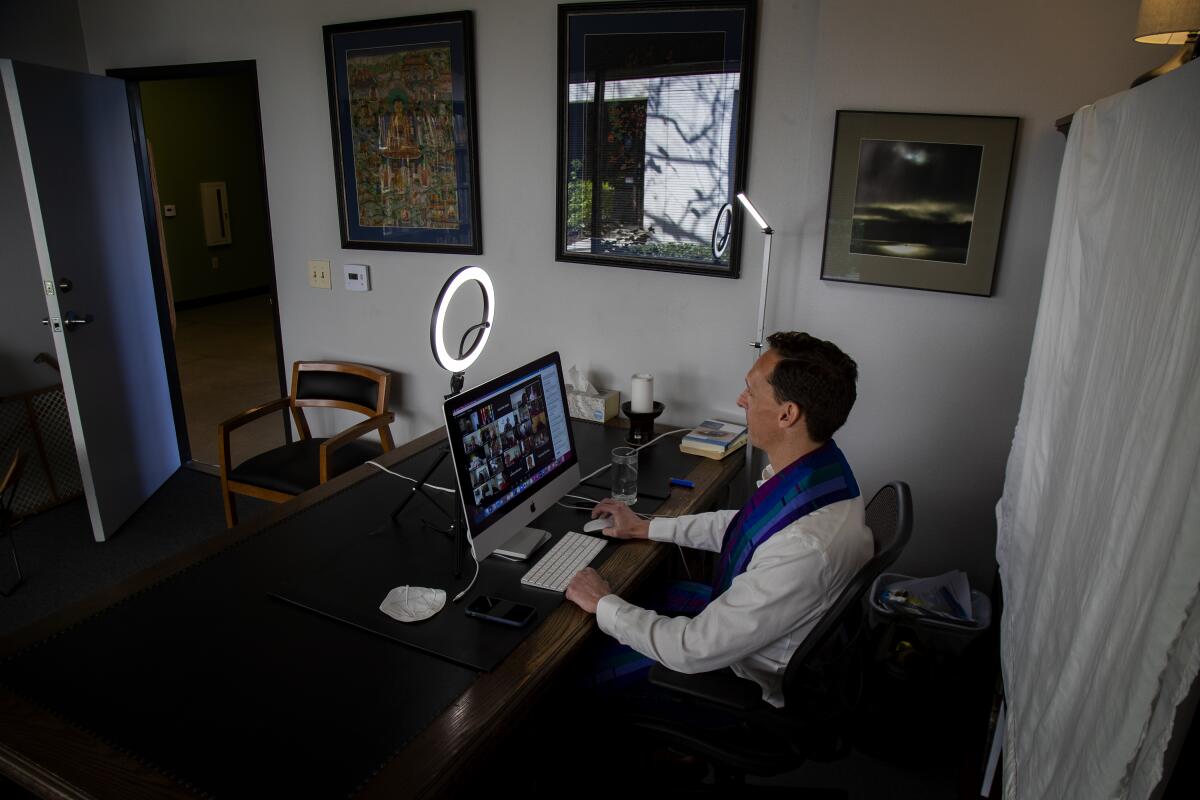
Your support helps us deliver the news that matters most.
What to do this weekend
Get outside. Lounge poolside at a posh L.A. hotel for a fraction of the price. Some luxury hotels like the W Hollywood and Hotel Figueroa are offering day passes for as little as $25 so you can enjoy amenities like pools, spas and restaurants, then head home without dropping hundreds on a room. Or take a trip to the Channel Islands — either virtually or in real life. Subscribe to our Escapes newsletter for more travel ideas and The Wild for more on the outdoors.
Watch something great. Our weekend culture watch list includes the socially distanced (and controversy-shrouded) Golden Globe Awards, which Tina Fey and Amy Poehler will host from opposite coasts. And in his Indie Focus newsletter’s roundup of new movies, Mark Olsen highlights “The United States vs. Billie Holiday,” which tells the story of the singer’s addition and how her iconic song “Strange Fruit” made her the target of the U.S. government.
Eat something great. Celebrate Girl Scout cookie season by whipping up a batch of homemade thin mints to compare to the classic treat. While they’re in the oven, check out Lucas Kwan Peterson’s official Girl Scout cookie power rankings and see whether you agree. For more, subscribe to our Cooking newsletter.
Go online. Here’s The Times’ guide to the internet for when you’re looking for information on self-care, feel like learning something new or interesting or want to expand your entertainment horizons.
The pandemic in pictures

A New York steakhouse is bringing your dreams of having dinner with a celebrity to life. Sort of.
With pandemic guidelines limiting indoor dining capacity to 35% in New York City, Peter Luger Steak House partnered with Madame Tussauds to bring life-like wax figures into the restaurant and liven up what would have been a drab dining atmosphere.
Jon Hamm dressed as Don Draper in “Mad Men” stands by the bar. Audrey Hepburn rests her arm on a table she shares with former New York Giant Michael Strahan, while Jimmy Fallon has a table to himself. Al Roker greets guests at the restaurant’s entrance.
The mannequins will stay in the steakhouse until Monday, when they will be returned to Madam Tussauds wax museum in Manhattan.
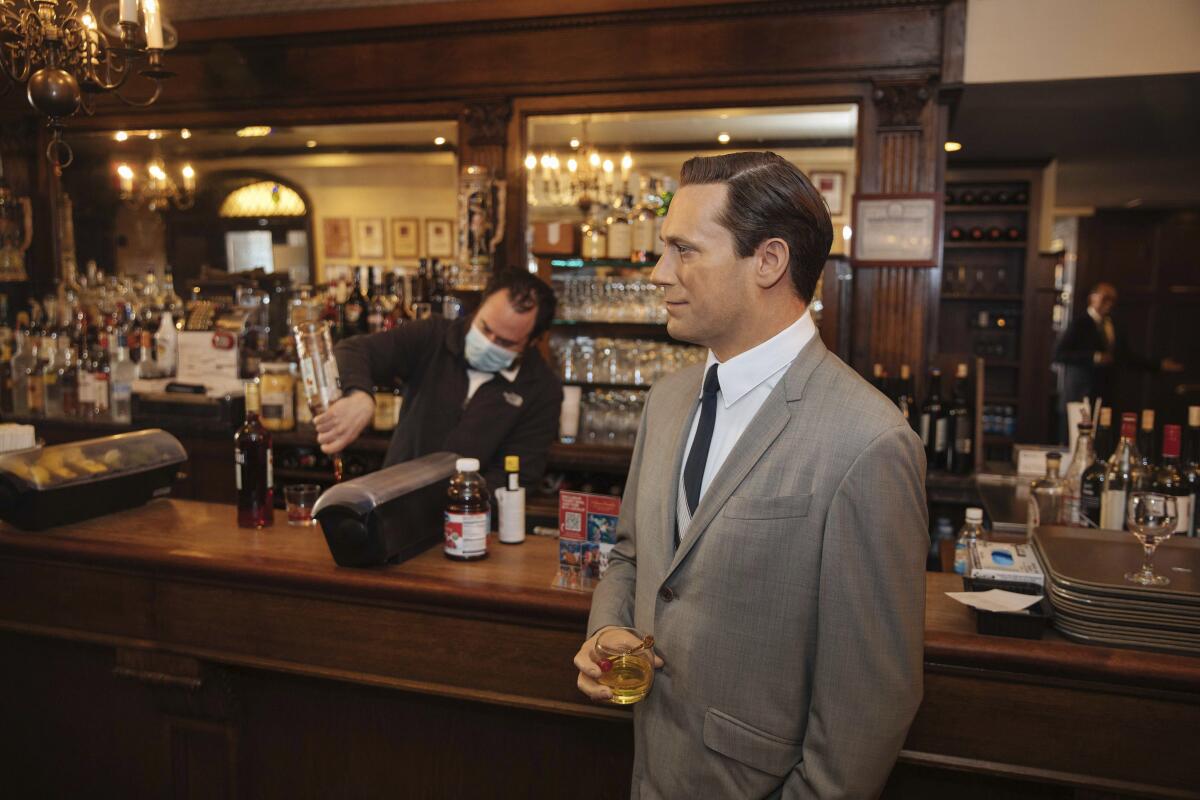
Resources
Need a vaccine? Keep in mind that supplies are limited, and getting one can be a challenge. Sign up for email updates, check your eligibility and, if you’re eligible, make an appointment where you live: City of Los Angeles | Los Angeles County | Kern County | Orange County | Riverside County | San Bernardino County | San Diego County | San Luis Obispo County | Santa Barbara County | Ventura County
Practice social distancing using these tips, and wear a mask or two.
Watch for symptoms such as fever, cough, shortness of breath, chills, shaking with chills, muscle pain, headache, sore throat and loss of taste or smell. Here’s what to look for and when.
Need to get tested? Here’s where you can in L.A. County and around California.
Americans are hurting in many ways. We have advice for helping kids cope, resources for people experiencing domestic abuse and a newsletter to help you make ends meet.
We’ve answered hundreds of readers’ questions. Explore them in our archive here.
For our most up-to-date coverage, visit our homepage and our Health section, get our breaking news alerts, and follow us on Twitter and Instagram.




